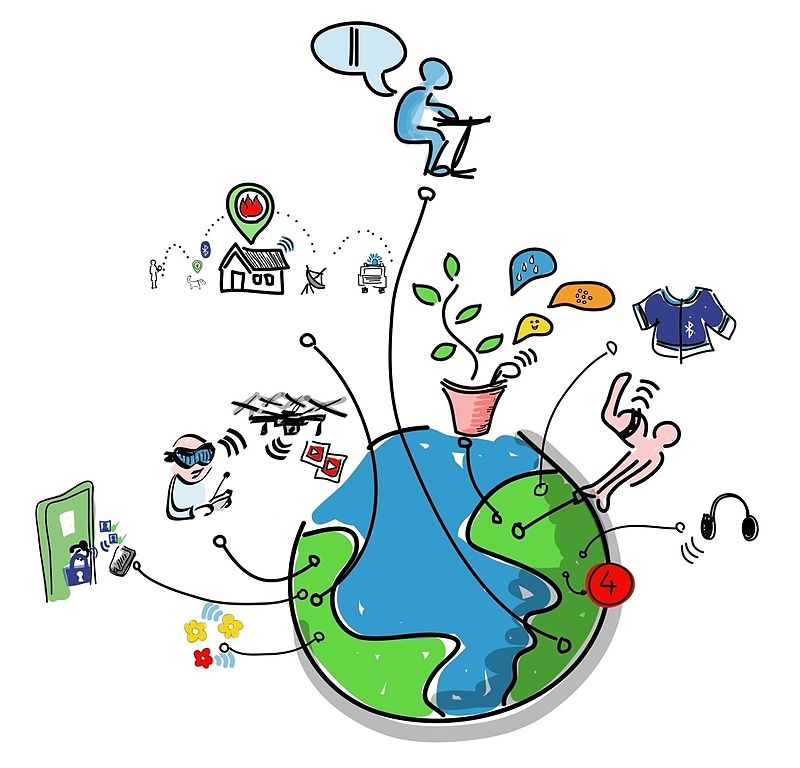The Internet of things

The Internet of things (IoT) is the network of physical devices, vehicles, home appliances and other items embedded with electronics, software, sensors, actuators, and connectivity which enables these objects to connect and exchange data.Each thing is uniquely identifiable through its embedded computing system but is able to inter-operate within the existing Internet infrastructure.
The figure of online capable devices increased 31% from 2016 to 8.4 billion in 2017. Experts estimate that the IoT will consist of about 30 billion objects by 2020.It is also estimated that the global market value of IoT will reach $7.1 trillion by 2020.
The IoT allows objects to be sensed or controlled remotely across existing network infrastructure,creating opportunities for more direct integration of the physical world into computer-based systems, and resulting in improved efficiency, accuracy and economic benefit in addition to reduced human intervention.When IoT is augmented with sensors and actuators, the technology becomes an instance of the more general class of cyber-physical systems, which also encompasses technologies such as smart grids, virtual power plants, smart homes, intelligent transportation and smart cities.
"Things", in the IoT sense, can refer to a wide variety of devices such as heart monitoring implants, biochip transponders on farm animals, cameras streaming live feeds of wild animals in coastal waters, automobiles with built-in sensors, DNA analysis devices for environmental/food/pathogen monitoring, or field operation devices that assist firefighters in search and rescue operations. Legal scholars suggest regarding "things" as an "inextricable mixture of hardware, software, data and service".
These devices collect useful data with the help of various existing technologies and then autonomously flow the data between other devices.
The term "the Internet of things" was coined by Kevin Ashton of Procter & Gamble, later MIT's Auto-ID Center, in 1999.
Tabpear was formed out of the need for a cash-strapped web start-up to grow its coding resources.
The start-up's founders soon discovered that accessing local talent was cost- prohibitive, whilst the available alternatives, Freelancer websites and traditional offshore development centres simply did not cater for the needs of a typical SME.
What was needed was a new type of IT offshoring centre... one able to deliver cost- effective resources on-demand, to clients of all shapes and sizes, with minimal fuss and maximum agility.
Tabpear was born... entirely flexible and infinitely scalable, our pool of best- in-class developers, work in teams of various sizes, delivering specific projects, or as a seamless extension of your existing workforce.